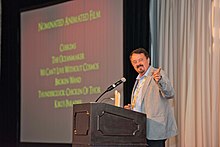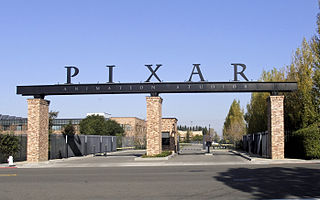
Pixar Animation Studios is an American animation studio based in Emeryville, California, known for its critically and commercially successful computer-animated feature films. Since 2006, Pixar has been a subsidiary of Walt Disney Studios, a division of Disney Entertainment, a segment of the Walt Disney Company.
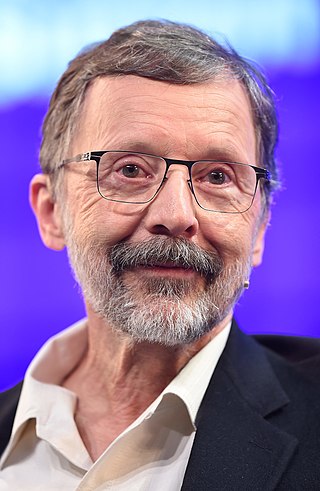
Edwin Earl Catmull is an American computer scientist and animator who served as the co-founder of Pixar and the President of Walt Disney Animation Studios. He has been honored for his contributions to 3D computer graphics, including the 2019 ACM Turing Award.

Tin Toy is a 1988 American animated short film produced by Pixar and directed by John Lasseter. The short film, which runs for five minutes, stars Tinny, a tin one-man band toy, trying to escape from Billy, a human baby. The third short film produced by the company's small animation division, it was a risky investment: due to the low revenue produced by Pixar's main product, the Pixar Image Computer, the company was under financial constraints.

Luxo Jr. is a 1986 American animated short film produced and released by Pixar. Written and directed by John Lasseter, the two-minute short film revolves around one larger and one smaller desk lamp. The larger lamp, named Luxo Sr., looks on while the smaller, "younger" Luxo Jr. plays exuberantly with a ball to the extent that it accidentally deflates. Luxo Jr. was Pixar's first animation after Ed Catmull and John Lasseter left the Lucasfilm Computer Division. The film is the source of Luxo Jr., the mascot of Pixar.
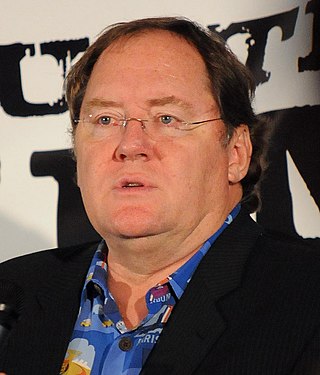
John Alan Lasseter is an American film director, producer, and animator. He has served as the Head of Animation at Skydance Animation since 2019. Previously, he acted as the chief creative officer of Pixar Animation Studios, Walt Disney Animation Studios, and Disneytoon Studios, as well as the Principal Creative Advisor for Walt Disney Imagineering.
Pixar RenderMan is proprietary photorealistic 3D rendering software produced by Pixar Animation Studios. Pixar uses RenderMan to render their in-house 3D animated movie productions and it is also available as a commercial product licensed to third parties. In 2015, a free non-commercial version of RenderMan became available.

Reyes rendering is a computer software architecture used in 3D computer graphics to render photo-realistic images. It was developed in the mid-1980s by Loren Carpenter and Robert L. Cook at Lucasfilm's Computer Graphics Research Group, which is now Pixar. It was first used in 1982 to render images for the Genesis effect sequence in the movie Star Trek II: The Wrath of Khan. Pixar's RenderMan was an implementation of the Reyes algorithm, It has been deprecated as of 2016 and removed as in RenderMan 21. According to the original paper describing the algorithm, the Reyes image rendering system is "An architecture for fast high-quality rendering of complex images." Reyes was proposed as a collection of algorithms and data processing systems. However, the terms "algorithm" and "architecture" have come to be used synonymously in this context and are used interchangeably in this article.

Red's Dream is a 1987 American animated short film written and directed by John Lasseter and produced by Pixar. The short film, which runs four minutes, stars Red, a unicycle. Propped up in the corner of a bicycle store on a rainy night, Red dreams of a fantasy where it becomes the star of a circus. Red's Dream was Pixar's second computer-animated short following Luxo Jr. in 1986, also directed by Lasseter.

The Adventures of André & Wally B. is a 1984 American animated short film produced by the Lucasfilm Computer Graphics Project, a division of Lucasfilm and the predecessor of Pixar. The short was groundbreaking by the standards of the time and helped spark the film industry's interest in computer animation.

Robert L. Cook is a computer graphics researcher and developer, and the co-creator of the RenderMan rendering software. His contributions are considered to be highly influential in the field of animated arts.

Alvy Ray Smith III is an American computer scientist who co-founded Lucasfilm's Computer Division and Pixar, participating in the 1980s and 1990s expansion of computer animation into feature film.
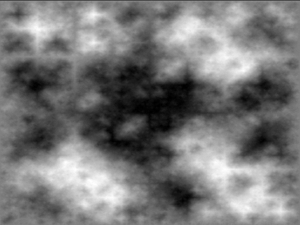
The diamond-square algorithm is a method for generating heightmaps for computer graphics. It is a slightly better algorithm than the three-dimensional implementation of the midpoint displacement algorithm, which produces two-dimensional landscapes. It is also known as the random midpoint displacement fractal, the cloud fractal or the plasma fractal, because of the plasma effect produced when applied.

Patrick M. Hanrahan is an American computer graphics researcher, the Canon USA Professor of Computer Science and Electrical Engineering in the Computer Graphics Laboratory at Stanford University. His research focuses on rendering algorithms, graphics processing units, as well as scientific illustration and visualization. He has received numerous awards, including the 2019 Turing Award.

Computer graphics is a sub-field of computer science which studies methods for digitally synthesizing and manipulating visual content. Although the term often refers to the study of three-dimensional computer graphics, it also encompasses two-dimensional graphics and image processing.

Computer graphics deals with by generating images and art with the aid of computers. Today, computer graphics is a core technology in digital photography, film, video games, digital art, cell phone and computer displays, and many specialized applications. A great deal of specialized hardware and software has been developed, with the displays of most devices being driven by computer graphics hardware. It is a vast and recently developed area of computer science. The phrase was coined in 1960 by computer graphics researchers Verne Hudson and William Fetter of Boeing. It is often abbreviated as CG, or typically in the context of film as computer generated imagery (CGI). The non-artistic aspects of computer graphics are the subject of computer science research.
Samuel J Leffler is a computer scientist, known for his extensive work on BSD, from the 1980s to FreeBSD in the present day. Among other projects, he created HylaFAX, LibTIFF, and the FreeBSD Wireless Device Drivers.
The history of computer animation began as early as the 1940s and 1950s, when people began to experiment with computer graphics – most notably by John Whitney. It was only by the early 1960s when digital computers had become widely established, that new avenues for innovative computer graphics blossomed. Initially, uses were mainly for scientific, engineering and other research purposes, but artistic experimentation began to make its appearance by the mid-1960s – most notably by Dr. Thomas Calvert. By the mid-1970s, many such efforts were beginning to enter into public media. Much computer graphics at this time involved 2-D imagery, though increasingly as computer power improved, efforts to achieve 3-D realism became the emphasis. By the late 1980s, photo-realistic 3-D was beginning to appear in film movies, and by mid-1990s had developed to the point where 3-D animation could be used for entire feature film production.
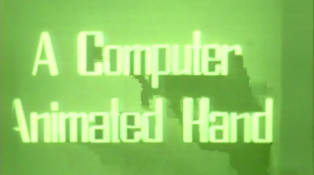
A Computer Animated Hand is the title of a 1972 American computer-animated short film produced by Edwin Catmull and Fred Parke. Produced during Catmull's tenure at the University of Utah, the short was created for a graduate course project. After creating a model of his left hand, 350 triangles and polygons were drawn in ink on its surface. The model was digitized from the data and laboriously animated in a three-dimensional animation program that Catmull wrote.
Thomas K. Porter is the senior vice president of production strategy at Pixar and one of the studio's founding employees.

Michael Kass is an American computer scientist best known for his work in computer graphics and computer vision. He has won an Academy Award and the SIGGRAPH Computer Graphics Achievement Award and is an ACM Fellow.
